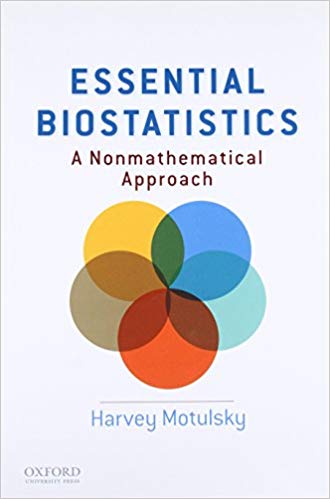Essential Biostatistics: A Nonmathematical Approach (2015) is a 200 page book that introduces you to most of the important concepts of clinical epidemiology and biostatistics. But instead of bogging things down with formulas and calculations, the book shows you how to use biostatistical concepts in practice.

Take for example the concept of statistical significance. We all know (or should know!) that a P value of less than 0.05 is considered statistically significant. But what does this mean from a practical point of view? Well, to many, this means that the tested intervention improves the outcome and should therefore be adopted. However, as the book points out (page 96), this is only one of several possibly valid interpretations! Here are some other possibilities:
- Poor methodology: the study was badly designed or contains one or more biases. For example, The study was done only in healthy young men, while the drug is intended to be used mostly in elderly women with multiple comorbidities.
- The effect is statistically significant but clinically trivial: for example, a medication is discovered that lowers pain scores from an average of 6.9 to an average of 6.8, a small difference which is mathematically shown to be statistically significant. However, clinically speaking, patients cannot distinguish a pain score of 6.9 from one of 6.8, so the intervention is useless.
- A Type I error has been committed: that is, the study showed a difference, when, in fact, there is none. Remember: choosing a significance level of 0.05 means that you expect a Type I error to be committed 5% of the time! Therefore, it’s entirely possible (although somewhat improbable) that the study was well designed and showed a statistically significant and clinically meaningful result, yet the results occurred due to chance alone!
- There is a multiple comparison problem: the experimenter ran the experiment, or the data, many times until they found results that they deemed attractive. As the saying goes, if you torture the data long enough, it will confess to something!
As you can see, this approach helps learners understand the logical foundations of clinical epidemiology and biostatistic in a way that’s immediately relevant to clinical practice, all without delving too deeply into the underlying mathematics. For these reasons, I recommend Essential Biostatistics: A Nonmathematical Approach (2015) very highly to medical students, residents and attendings.


Leave a Reply